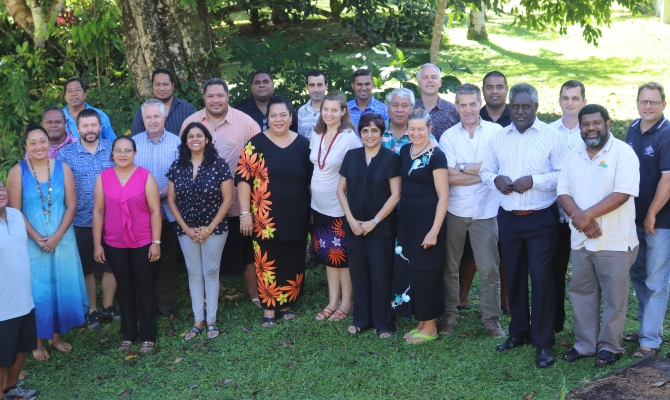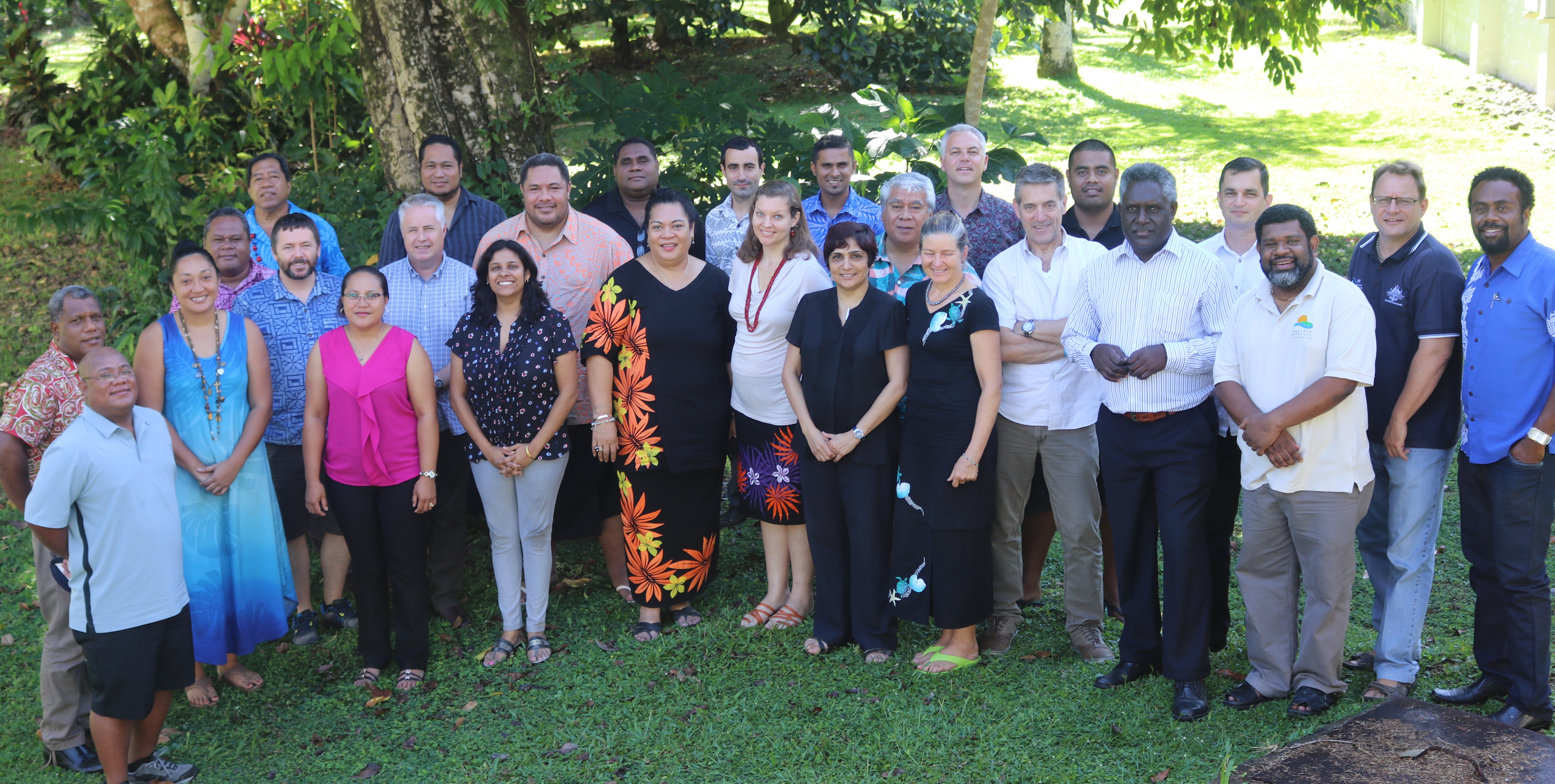
Climate Change Resilience
A review of the Pacific Island Meteorological Strategy (PIMS) 2012-2021 to encompass current and emerging priorities for the Pacific region was the objective of a regional workshop held at SPREP this week.
The Strategy was adopted by the Pacific Meteorological Council (PMC) in 2012 to set out the strategic priorities for strengthening the National Meteorological and Hydrological Services (NMHS) in the Pacific region, to ensure they can effectively deliver their basic and core functions on weather and climate over the next decade.
The Strategy aims for improved weather services, improved end-to-end Multi Hazard Early Warning Systems, enhanced infrastructure for weather, climate and water and improved climate services.
"The Pacific Islands Meteorological Strategy (2012-2021) represents a continued strategic effort on the part of the directors of National Meteorological Services (NMSs) and partners to ensure that the services provided are sustained and are of the best quality possible," said Mr Mulipola Ausetalia Titimaea, Director of Samoa National Meteorological Services.
"The mid-term review of the PIMS is meant to ensure that emerging and evolving issues related to weather, climate and hydrological services are considered, updated and planned for. This is particularly important for the Pacific islands due to our vulnerability to extreme weather and climate."
 Participants of the PIMS Mid-Term Review workshop held at the SPREP Campus. Photo: SPREP
Participants of the PIMS Mid-Term Review workshop held at the SPREP Campus. Photo: SPREP
Some of the key objectives of the review were to identify gaps at the national and regional level in terms of relevance, effectiveness, management, coordination and impact in the implementation of the PIMS and to make recommendations on how these could be strengthened and improved.
Pacific Key Outcomes (PKO) of the PIMS were also reviewed and updated, to identify indicators and targets where necessary, as well as evaluating the effectiveness of the services information and information systems provided by NMHSs to communities and end users.
The need for the PIMS to be aligned with global priorities such as the United Nations Sustainable Development Goals, the SAMOA Pathway for Small Island Developing States and the World Meteorological Organization Strategic Plan to name a few, was also addressed at the workshop.
The workshop, held on 6 and 7 October, 2016, was attended by Meteorological Directors from the Pacific region, as well as partners and donors of the Pacific Meteorological Council.
For more information, please contact Dr Netatua Pelesikoti at [email protected]
The Strategy was adopted by the Pacific Meteorological Council (PMC) in 2012 to set out the strategic priorities for strengthening the National Meteorological and Hydrological Services (NMHS) in the Pacific region, to ensure they can effectively deliver their basic and core functions on weather and climate over the next decade.
The Strategy aims for improved weather services, improved end-to-end Multi Hazard Early Warning Systems, enhanced infrastructure for weather, climate and water and improved climate services.
"The Pacific Islands Meteorological Strategy (2012-2021) represents a continued strategic effort on the part of the directors of National Meteorological Services (NMSs) and partners to ensure that the services provided are sustained and are of the best quality possible," said Mr Mulipola Ausetalia Titimaea, Director of Samoa National Meteorological Services.
"The mid-term review of the PIMS is meant to ensure that emerging and evolving issues related to weather, climate and hydrological services are considered, updated and planned for. This is particularly important for the Pacific islands due to our vulnerability to extreme weather and climate."
 Participants of the PIMS Mid-Term Review workshop held at the SPREP Campus. Photo: SPREP
Participants of the PIMS Mid-Term Review workshop held at the SPREP Campus. Photo: SPREPSome of the key objectives of the review were to identify gaps at the national and regional level in terms of relevance, effectiveness, management, coordination and impact in the implementation of the PIMS and to make recommendations on how these could be strengthened and improved.
Pacific Key Outcomes (PKO) of the PIMS were also reviewed and updated, to identify indicators and targets where necessary, as well as evaluating the effectiveness of the services information and information systems provided by NMHSs to communities and end users.
The need for the PIMS to be aligned with global priorities such as the United Nations Sustainable Development Goals, the SAMOA Pathway for Small Island Developing States and the World Meteorological Organization Strategic Plan to name a few, was also addressed at the workshop.
The workshop, held on 6 and 7 October, 2016, was attended by Meteorological Directors from the Pacific region, as well as partners and donors of the Pacific Meteorological Council.
For more information, please contact Dr Netatua Pelesikoti at [email protected]